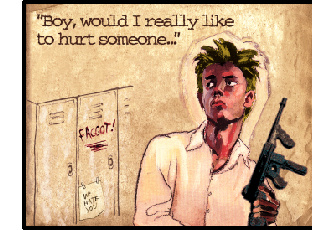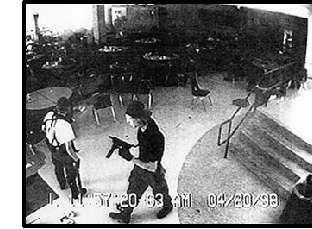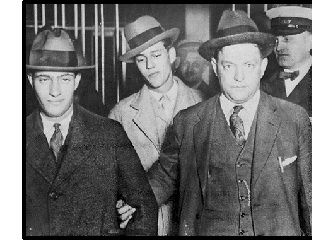
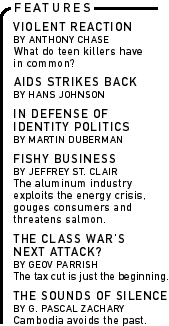
|
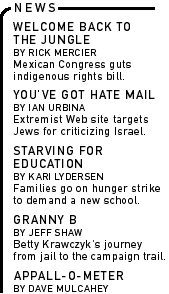
|
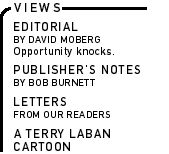
|
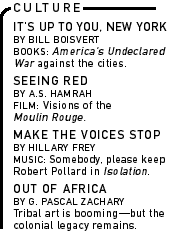
|
|
|
| |
|
||||
|
I recall the feelings of hatred and fantasies of revenge I harbored as a teen-ager in the rural Hudson River Valley, where certain classmates tormented me because they thought I was gay. The arrival of my adolescence was urgently convincing me that when bullies called me a faggot, they were right. My good grades, the leads I got in school plays, and the encouragement I received for artistic ability could not compensate for the fear I felt as my sexuality became more and more real. Those memories return to me each time I hear that yet another teen-age boy has taken a gun into a high school and opened fire, leaving his community terrorized and bewildered. I do not feel bewildered. The memory of my own revenge fantasies, Bosch-like in their terror, return to me vividly, even now, 30 years after my days at Van Wyck Junior High School. Needless to say, when I heard on April 20, 1999, that Eric Harris and Dylan Klebold
Not since Clarence Darrow defended Nathan Leopold and Richard Loeb, who gratuitously killed 14-year-old Bobby Franks for a thrill in 1924, has there been a case of murder by a pair of adolescent boys so bizarre and intriguing to the nation as the massacre at Columbine High. All the boys came from lives of privilege and saw themselves as outsiders, superior in significant ways. Like Leopold and Loeb, Harris and Klebold were said to have a unique and dangerous chemistry between them; they would never have done alone what they did together. Both pairs had a relationship in which one was dominant––Loeb and Harris––and the other passive. Still, in both cases, the boys were clearly full partners in the assault. Among other details, forensic evidence confirms that Harris and Klebold were responsible for a nearly equal number of murders. Videotapes made by Harris and Klebold reveal that they were very concerned about hurting their parents with what they were about to do, especially Klebold. (Leopold and Loeb were similarly concerned about their families' reactions, especially Leopold). And it is fascinating that although he made the famous tell-all videotape, Klebold still took time to erase his computer's hard drive immediately before the assault on Columbine. Leaving nothing to chance, the technologically sophisticated boy obliterated all traces of these files. In view of everything he told on the tape, what could he have been trying so meticulously to hide? Though the boys left an extensive record of their thoughts and plans, the personal details of their friendship remain a mystery. Unlike Leopold and Loeb, Harris and Klebold did not survive their crime. The extensive details of the Leopold and Loeb relationship, wherein Loeb consented to sexual activity with Leopold in exchange for partnership in increasingly violent crimes, are not to be found in the Harris and Klebold story. Gradually, however, in the days and weeks following the shootings, some details about what had motivated Harris and Klebold began to emerge. Depending upon who you were, it seems, Columbine High School could be an oppressive place. It was not until August 1999, fully four months after the Columbine attack, that Dave Cullen of Salon reported: "Eric Harris and Dylan Klebold had endured repeated harassment due to rumors they were gay. Jocks especially taunted the pair with epithets like 'faggot' and 'homo.' " I read the phrase over and over and over and began to wonder about other boys at other schools. The details were surprisingly easy to find:
After the massacre at Columbine High, the Littleton community and the media all but
Nearly everyone knows the story of Cassie Bernall. While pointing a gun at her head, Klebold supposedly asked Bernall if she believed in God, and the girl bravely answered, "Yes." She was summarily shot, becoming a martyr. Bolstered by details that Bernall was formerly a troubled teen who had threatened to kill her own parents, the story was recounted in the best-selling book She Said Yes: The Unlikely Martyrdom of Cassie Bernall written by her mother, Misty. Only it never happened. Emily Wyant, the only surviving witness to Bernall's murder, was with Bernall, looking into her eyes when Klebold slammed his hand on the table under which they were hiding, said, "Peekaboo," and without exchanging a word, shot the girl. Bernall's murder was tragic, yes, but not the inspirational pro-Christian martyrdom that it was to become. Yet Right-wing fundamentalist groups have used the story to recruit teen-agers into Christian youth groups from coast to coast. The Rocky Mountain News continued to run stories promoting She Said Yes as a factual account for five months after they learned it was fictitious, stopping only after Cullen reported the true story. Right-wing leaders were quick to light on the possibility that the Columbine killers were gay, with little or no prompting. The Westboro Baptist Church in Topeka, Kansas sent out a media alert saying, "Two filthy fags slaughtered 13 people at Columbine High"; the Rev. Jerry Falwell described Klebold and Harris as gay on Geraldo Live. With rumors circulating that the two boys were gay, the Denver gay community has been reluctant to speak up. Their dilemma is obvious. If the killers were gay, and tormented for it, that proves homophobia is destructive. On the other hand, depicting the killers sympathetically could lead to a backlash against the gay community. Gay people are disarmed, unable to stand up for the murderers, even though doing so might prevent future murders. The right, meanwhile, can point to the killings in a way that could encourage further repression and abuse of gay teens. There are those who seem to be saying that if a kid eventually turns violent, it proves that he deserved any bullying he may have suffered. Many argue that all teen-agers get called "gay" and "faggot," that the words are as common as hello or good-bye. But persistent, focused torment of an individual because the epithet is perceived to be true is another matter entirely. Persecution of gay high school students, and students perceived to be gay, is endemic. A 1998 survey of 58 high schools conducted by the Massachusetts Department of Education revealed that 22 percent of gay respondents had skipped school in the past month because they felt unsafe there. Thirty-one percent had been threatened or injured at school sometime during the previous 12 months. A recent study in Iowa indicated that the average high school student in Des Moines hears about 25 anti-gay remarks each day. And in June, Human Rights Watch released a 203-page report, which suggests that gay teen-agers in U.S. schools are often subjected to such intense bullying that they are unable to receive an adequate education. The report says that the problem affects as many as 2 million school-age youth nationwide. Still schools typically act as if this phenomenon does not exist. Human Rights Watch reports that school officials usually ignore such harassment, that tormentors are often not held accountable, and that, in some cases, school officials have even encouraged or participated in the abuse. Beth Reis, a principal researcher of a study of school-related anti-gay violence in Washington State, observed that harassment, if not ignored, is typically dismissed as "teasing." Sometimes the victims are advised that if they insist upon being openly gay, they have to expect such treatment. Joyce Stanton Mitchell reports in College Board Review that a survey of the nation's 42 largest school districts indicates that 76 percent do not provide teacher training on issues facing gay students. Indeed, teachers ignore instances of anti-gay harassment 97 percent of the time. Human Rights Watch also documents instances of physical violence against gay teens. Such occurrences are routinely reported, but seldom pulled together in a way that would reveal a pattern. For instance, California teen-agers lobbying for a bill specifically banning discrimination against gay students, sponsored by state senator Sheila Kuehl (D-Santa Monica), reported being spat upon and beaten. In 1999, Jonathan Shapiro, 18, and Matthew Rogers, 20, reportedly used a pocket knife to cut the word "HOMO" into the back of a 17-year-old junior at Northfield Mount Hermon School, a private school in Massachusetts, because the boy liked the British rock band Queen, whose lead singer Freddie Mercury died of AIDS complications in 1991. "Rogers called it a gay band," said local Police Chief David Hastings. Reis' study of anti-gay violence in Washington State, which was conducted by a group of public and private agencies called the Safe Schools Coalition, chronicled eight anti-gay motivated gang rapes on boys and girls. In one case, a school cheerleader reported being forced to watch while a lesbian friend who had kissed her at the prom was raped and urinated upon by the cheerleader's boyfriend and his friends. The attack allegedly occurred in a storage building on school grounds, but was never reported to school authorities. The increase in campus gay-baiting is happening at the same time as an increase in the number of gay student support groups, such as Gay-Straight Alliances (in which gay kids can find support while still being ambiguous about whether they are gay or merely sympathetic), and an increase in lawsuits pursued by those who have been victimized. The shootings at Columbine High School have directly and universally altered the landscape of these events. In December 1999, for instance, the Boston Herald reported that a Sandwich, Massachusetts high school student, who had been expelled for making death threats just days after the Columbine High shootings, filed a $75 million lawsuit, claiming that his classmates had made school "a living hell" for him and that school officials had done nothing about it. "The boy, who was 16 at the time," reported the Herald, "snapped after 18 months of jeers and taunts from kids who called him fat and gay." Whether the boy is gay or not, in the "don't ask, don't tell" world of teen-agers, he understandably claims not to be. The "Littleton" connection was made in March 2000 in Toronto, when it was reported that an eighth-grade student had been arrested for allegedly making a "kill list" with the names of five schoolmates on it. Police came to the school and arrested the teen, charging him with five counts of threatening others. He was suspended from school indefinitely and forbidden to go near the five male students named on his list. The immediate response of the school principal was to assert, "our response is to take it seriously and follow up." The list, however, was not unmotivated. According to the Toronto Star, the 14-year-old boy's classmates said that he "had been the target of teasing, with some kids calling him 'gay.' " Toronto District School Board chairwoman Gail Nyberg told In These Times that the bullies were reprimanded and sent to counselors. Nyberg, however, has battled conservative groups over her efforts to ban anti-gay language from the Toronto schools. "Opponents have argued," Nyberg says, "that if we protect gay teens now, in a year we'll be writing laws protecting those who 'wear glasses or have pimples.' " And in Washington State, Gov. Gary Locke and some of his fellow Democrats have been scrambling to resurrect a measure intended to stop bullying in public schools. The bill was derailed after the Washington chapter of the Christian Coalition denounced it as a gay rights measure, arguing that the legislation denied Christians the right to vocalize their abhorrence of homosexuality. Is it any wonder, given the realities of society's attitudes toward gay people, that gay
Look at the nation's youth suicide rate. Gay males account for more than half of male youth suicide. A pivotal 1978 study by Alan P. Bell and Martins Weinberg of Indiana University first indicated a suicide rate among homosexual males 14 times higher than that of their heterosexual peers. Study after study reconfirms this result. A recent study of 750 males ages 18 to 27 years in Calgary, Alberta revealed that homosexual males comprised 62.5 percent of suicide attempters. Here in Buffalo, I read recently about a boy from a local Catholic high school, an excellent student, star of school musicals and the well-loved son of an affluent family. The accompanying photo showed a handsome blond youth with a sparkling smile. The story was about his suicide. My antennae went up. I knew his drama teacher and called her. "Why?" I asked, and she responded, "We all think he was gay." The whole notion that gay teen-agers exist disturbs some people. Gay teens themselves are not immune to societal hate and repulsion of homosexuality. This is specially true for those growing up in intolerant environments. Some direct that hatred inward. As a society we apparently are more comfortable with gay teen suicide than we are with gay teens. How different the attitude becomes when such hatred and repulsion is not directed inward. In 1999, at the time of the shootings, Columbine High School had no services geared toward gay youth and had never had an openly gay student. Aricia La France, a Mennonite youth worker in Littleton, says that one lesbian student told her she had been in class with Klebold when he protested to the teacher that another student had called him a "fag," and the teacher replied, "But you are, aren't you?" This story may be apocryphal. But interviews with Columbine students indicate that the possible homosexuality of Klebold and Harris is used to confirm that they were freaks or monsters--not to open the dialogue on tolerance and diversity. The implication is that the abuse the pair suffered in life is justified by the deed they finally committed. Ben Oakley, a sophomore from the soccer team, told Salon's Cullen that students picked on the boys "all the time," because they were in the Trench Coat Mafia, a clique of Columbine misfits who wore black trench coats to school. "The majority of [the Trench Coat Mafia] were gay," Oakley said. "So everyone would make fun of them." These observations were reiterated by several self-described jocks from Columbine High who told unsubstantiated tales of the boys and their Trench Coat friends taking showers together, or "touching" each other or holding hands and groping in the school corridors. Friends of Klebold and Harris insisted that the boys were heterosexual, and using the naēve logic of adolescence, cited the fact that both had taken dates to the prom as "proof." The truth may never be known. The boys probably had not sorted the issue out for themselves. Still, a kind of consensus has developed, fueled by persistent rumors in the Denver gay community that at least one of the boys was gay. Whatever the case, the fact remains that Littleton is a very bad place to be gay. LaFrance knows this to be true. She and her husband Ray opened a teen haven in a coffeehouse setting called "The Place," in Littleton in July 1999, following the Columbine shootings. They expected to serve about 200 youngsters. During their 18 months of operation, the number reached 1,300. Remarkably, a survey identifies 20 percent of the teen visitors as "gay," 12 percent as "bisexual" and about 20 percent as "minorities." Located in a strip mall, their neighbors, including a fundamentalist Christian church, abhorred them. "The basic theme was total acceptance and tolerance," explains LaFrance. "If you pick a fight or call somebody a fag, you're out of here!" LaFrance has worked with violent kids for 15 years. In the context of Columbine, her apparent sympathy for the bad guys made her immediately unpopular. Given the Christian tenor of the town, so did her comfort with homosexuality. "Those who liked us called my chief volunteer and me 'Will and Grace.' The church next door called us 'the hell hole.' " LaFrance recalls when one boy, who was sitting on the steps of The Place smoking, heard some other kids saying, "you faggot this and you faggot that." He asked them to stop, explaining, "because I'm gay." That evening when he went to his car he found it vandalized, the seat urinated on, and a Bible page left for his edification. "He is a really together kid, and he just seemed to shrug it off," she says. "Not every kid could do that." Indeed not. Especially not in rural and suburban America, where support for gay teens is scarce. A gay teen-ager who moved from Littleton to urban Denver told Cullen of his experiences coming out as gay in eighth grade at Deer Creek Middle School, which feeds students to Columbine. "One year everyone loved me," he said. "The next year I was the most hated kid in the whole school." Jocks were his worst tormentors, he said. He described one in particular who pelted him with rocks, wrote "faggot" and "we hate you" on his locker and taunted him him in the hallway with: "I heard the faggot got butt-fucked last night." "It gets to the point where you're crying in school because the people won't leave you alone," he said. "The teachers don't do anything about it." The boy attempted suicide several times that year, and eventually spent time in a mental hospital. "It can drive you to the point of insanity. What they want to do is make you cry. They want to hurt you. It's horrible. I hope that the one thing people learn out of this whole thing is to stop teasing people." In the interview, the boy didn't condone what Harris and Klebold
did, but said he understood what drove them over the edge. "They
couldn't take it anymore, and instead of taking it out on themselves,
they took it out on other people. I took it out on myself. But it
was a daily thought: 'Boy, would I really like to hurt someone.
Boy, would I like to see them dead.'" Anthony Chase is a freelance writer in Buffalo, New York.
|


